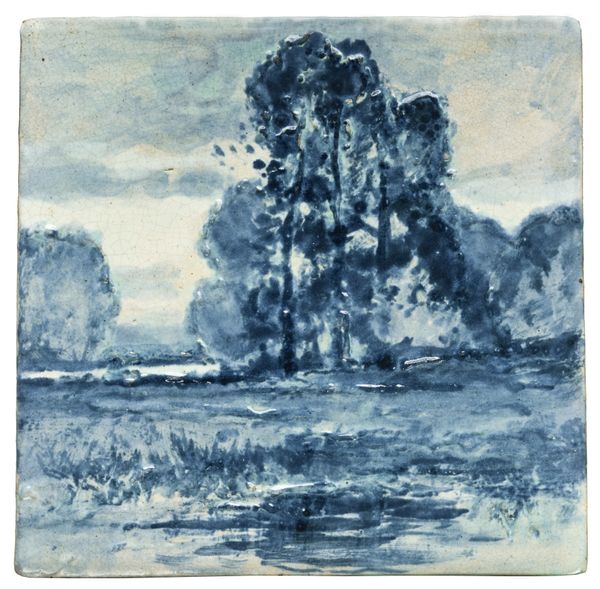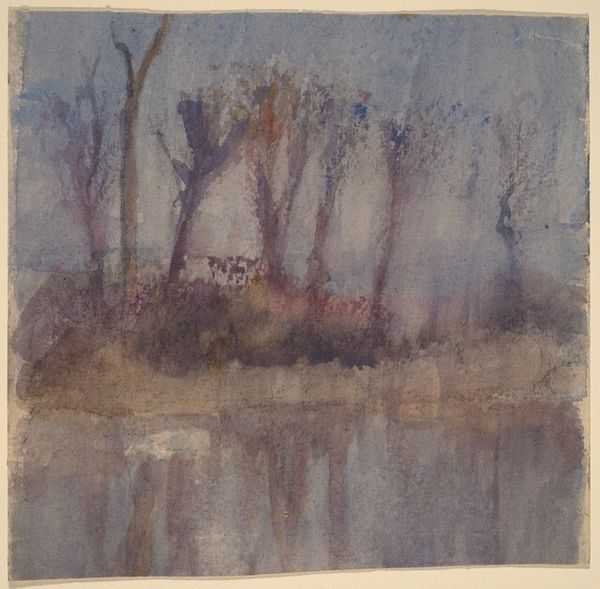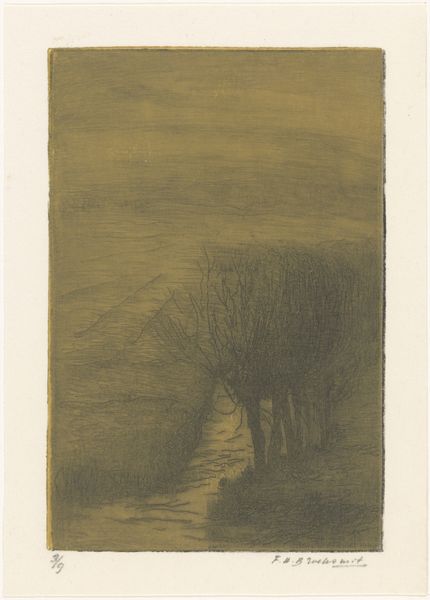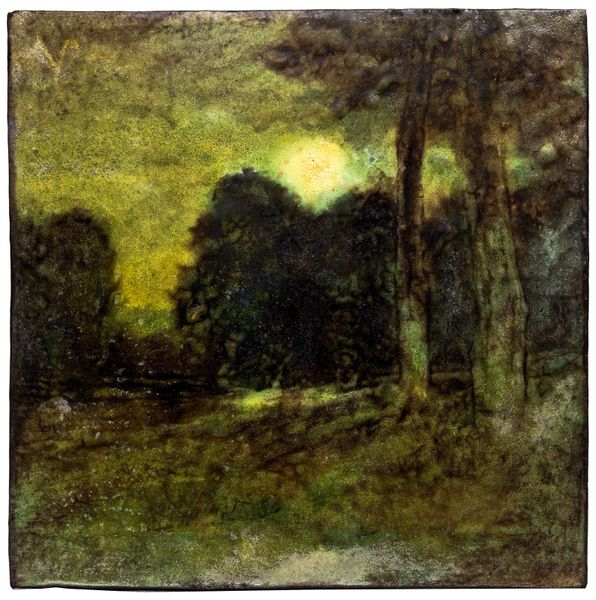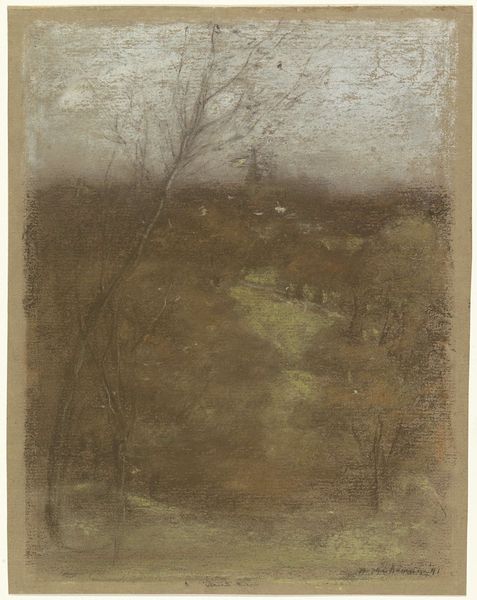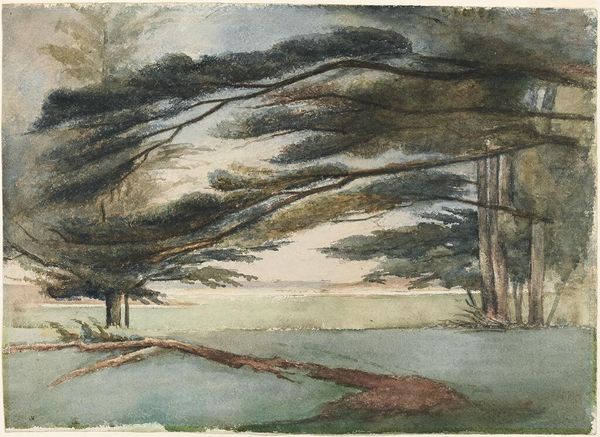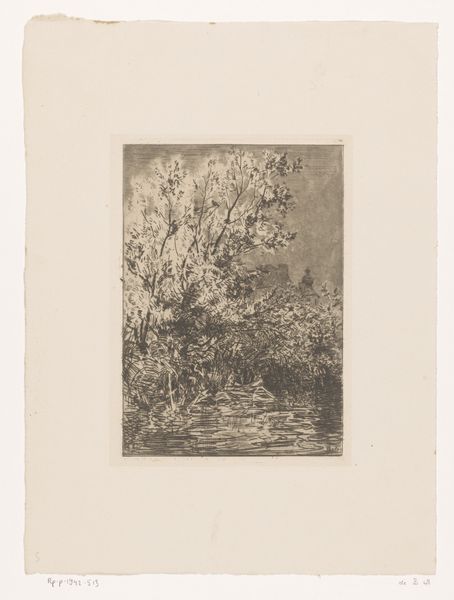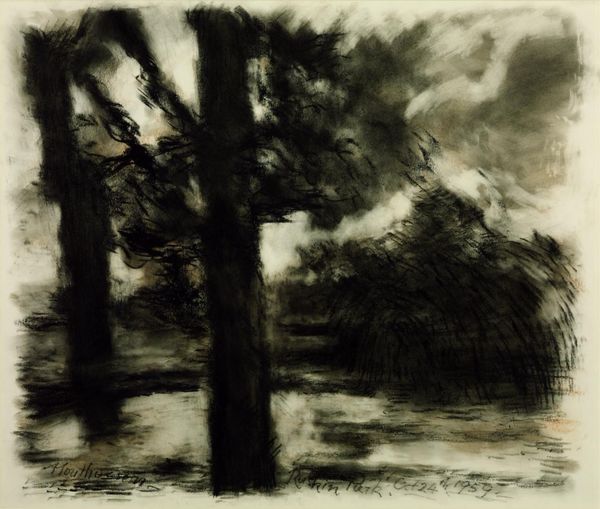
ceramic, watercolor
#
landscape
#
ceramic
#
watercolor
Dimensions: 7 7/8 x 7 7/8 x 3/4 in. (20 x 20 x 7.6 cm)
Copyright: Public Domain
Curator: This small landscape, simply titled "Tile," was crafted by Charles Volkmar sometime between 1896 and 1918. The piece, housed here at the Metropolitan Museum of Art, utilizes ceramic and watercolor. Editor: My immediate reaction is a kind of somber tranquility. It evokes quiet contemplation, a solitary communion with nature. There's a dreamlike haziness to the scene. Curator: Absolutely, and it's essential to remember that this isn't just a painting. It's a ceramic tile. The labor involved in creating such a smooth surface, then firing the ceramic, gives this a weight beyond mere decoration. What purpose did it serve, was it functional or ornamental? Editor: That's the question, isn't it? The landscape itself is rather ambiguous, and the color palette dominated by soft, muted greens and blues suggests a commentary on the precarity of nature itself at the dawn of the industrial age. Consider the context: the turn of the century brought immense social and economic upheaval and Volkmar here captures that feeling of uncertain transition. Curator: You make an important point about context. Looking at the composition, the trees, while central, are also vaguely obscured, which might be indicative of contemporary labor practices being obscured from plain view. We should ask how this fits into our understanding of consumer culture, given that mass-produced ceramic objects would be part of everyday life in middle-class homes. Editor: Yes! It’s easy to overlook pieces like this. This could be read as a critique of the commodification of the very landscapes from which resources are being extracted—a subtle commentary on the ecological cost of production embedded in an object intended for decorative consumption. How can a work meant to give joy bring us into discomfort about its means of creation? Curator: Exactly! And the conscious interplay of media – the inherent, elemental quality of clay combined with watercolor techniques to suggest atmospheric effect – brings another dimension to this piece that opens doors into exploring how material and labor meet aesthetic form and, ultimately, social reflection. Editor: What strikes me now is the intersection of private solace and public reflection. A piece like this compels us to understand art not just as aesthetics, but as a material index of societal unease. Curator: Well, looking closely, even something seemingly as small as a decorative tile can offer very wide insights, doesn't it? Editor: Indeed, these smaller artifacts sometimes speak the loudest.
Comments
No comments
Be the first to comment and join the conversation on the ultimate creative platform.
